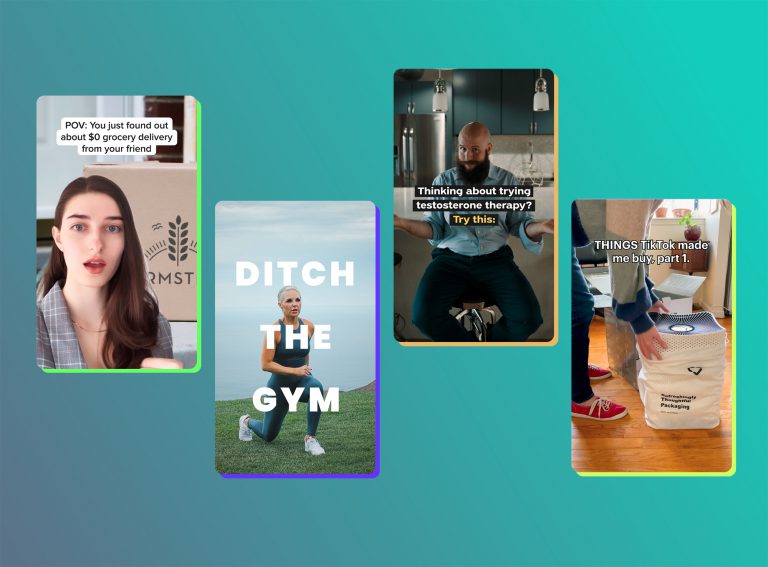
Good copywriting isn’t just about writing words—it’s about understanding what makes people take action. The difference between a brand that sells and one that struggles isn’t just the product—it’s how that product is positioned in the customer’s mind.
One of the biggest mistakes businesses make in advertising is thinking they need to convince people to want something. That’s not how great copy works.
Eugene Schwartz, one of the greatest copywriters of all time, put it perfectly when he said:
“Copy cannot create desire for a product. It can only take the hopes, dreams, fears, and desires that already exist in the hearts of millions of people, and focus those already-existing desires onto a particular product.”
This quote encapsulates one of the most important truths in marketing: People already want things. They want to be healthier, wealthier, happier, more secure, more attractive and more respected. Your job as a copywriter is not to convince them to want these things—it’s to show them how your product helps fulfill those existing desires.
Do you know what brands like Jocko Fuel, Rocksbox and Sunday have in common? It’s one thing: their excellent copywriting.
In this blog, we will explore some best practices those brands use in their copywriting to get amazing results.

Copywriting Best Practices
Good copy doesn’t happen by accident. It’s a mix of strategy, psychology and craft—and the best copywriters follow a repeatable process. Whether you’re writing an ad, a product page or an email, these three principles are essential for copy that actually sells.
Here are some best practices you need to keep in mind when writing:
1. Know Your Customer
Before you can sell anything, you need to deeply understand who you’re selling to.
Demographics are important (sex, age, location…), but what’s more important are their desires, fears, frustrations and motivations—and how they make decisions.
Here’s how to start:
- Begin with your BDQs–Buyer Decision Questions. These are the core questions your ideal customers ask themselves before buying. For example: Will this actually work for me? Is it worth the price? What makes this different from everything else I’ve tried?
- These BDQs should reflect the mindset of your best customer—not just anyone who might stumble onto your product. Speak to the ones most likely to convert.
- Read customer reviews and ad comments—there’s gold there. Look for exact phrases customers use to describe their pain points, doubts and breakthroughs. You’ll often find better copy in their own words than anything you could invent.
Once you know who your customers are and what they want, let’s move to the next step.
2. Know What Value You Bring
If your audience doesn’t immediately understand the value of what you’re offering, they’ll bounce. Fast.
Here’s how to highlight what matters:
- Benefits > features–features tell; benefits sell. Instead of “This app has real-time notifications,” say “Know what matters, the moment it happens.”
- Demonstrate value clearly–what’s the problem, and why is this product the best solution? Make that connection crystal clear.
- Tell a story–people remember stories. A mini narrative with emotional stakes can do more than a list of specs. Even a few lines about someone’s transformation using your product can build massive trust.
Always ask: How does this make the customer’s life better, easier or more exciting? That’s your core message.
3. Hook Them Quickly & Replicate What Works
In a world of 2-second scrolls, your copy needs to hook fast—or it’s lost.
Here’s what matters:
- Your hook is your make-or-break moment. Whether it’s the first line of an ad, the subject line of an email or the headline of a landing page, you need to grab attention immediately.
- It should:
- Spark curiosity,
- Hit a pain point,
- Make a bold promise, or
- Trigger emotion.
- Replicate what works. If a hook performs well—keep it. Use similar formats, tones and emotional triggers in future ads. Study past winners and reiterate.
Let’s see how some brands put these best practices in action.
Jocko Fuel: #1 at Understanding Their Audience
If there’s one brand that nails audience alignment, it’s Jocko Fuel. Everything, from their product names to their tone of voice—shows they deeply understand who they’re talking to, what those people care about and how to speak their language.
Their audience isn’t the casual gym-goer or someone looking for a trendy health drink. It’s the disciplined few: military professionals, athletes, high-performers, people who wake up at 4:30 a.m. on purpose (or the ones who have read Robin Sharma’s books) and those who believe in hard work, ownership and no excuses.
Jocko Fuel knows exactly who they’re talking to: disciplined people. So their copy doesn’t try to explain or sell discipline—it assumes it. That level of understanding allows them to skip the fluff and speak directly to the mindset of someone who’s in pursuit of excellence.
You see this in everything they write:
“Stay in the fight.”
“No sugar. No crash.”
“Formulated by Jocko Willink.”
This level of clarity comes from doing the work:
- Starting with the BDQs their audience asks (e.g., Can I trust this? Will this help me perform?)
- Studying how their customers speak in reviews and comments
- Aligning every message with a specific kind of person—not the general public
They don’t just sell supplements. They sell alignment with a way of life. That’s what happens when you truly know your audience.
Rocksbox: Highlighting Value Like a Diamond
Rocksbox also knows exactly who they’re speaking to—and what they most value. Their tone is elegant, chic and thoughtful, designed to connect with women who love fashion, self-expression and trying new styles.
The copy feels delicate yet confident, just like the pieces they offer. Even their use of emojis is intentional—💍✨—adding a playful, stylish touch without ever feeling over the top.
Rocksbox excels at showcasing the value of their jewelry subscription service by emphasizing the benefits that resonate with their target audience. Here’s how they do it:
Benefits Over Features
Instead of merely listing features, Rocksbox focuses on the advantages their service offers:
- Try Before You Buy: Members can experiment with different styles without immediate commitment, ensuring satisfaction before making a purchase.
- Unlimited Exchanges: The flexibility to swap pieces as often as desired keeps the jewelry collection fresh and aligned with current trends.
- Exclusive Discounts: Members receive special pricing, adding value beyond the rental service.
Addressing Customer Pain Points
Rocksbox understands common challenges jewelry lovers face:
- Indecision: Choosing the right piece can be daunting. Rocksbox alleviates this by allowing members to try multiple pieces before deciding.
- Cost Concerns: High-quality jewelry often comes with a hefty price tag. Rocksbox provides access to premium pieces at a fraction of the cost.
- Style Evolution: As personal styles evolve, so do jewelry preferences. Rocksbox’s model supports this evolution without the need for permanent purchases.
Rocksbox’s copywriting essence is the same on all their platforms: landing page, email, social media… Instead of hard-selling, they paint a lifestyle: freedom to try new styles, express yourself and swap jewelry as your mood or outfit changes. It’s subtle, but every post reminds you: This isn’t just jewelry—it’s a feeling.
Sunday: Make It Clear from the Start
Sunday’s copywriting also immediately addresses their customers’ common pain points. At the same time, they factor in their audience’s aspirations, using strong hooks that resonate with their customers’ desire for beautiful lawns without the hassle.
Sunday’s target audience is homeowners, particularly families residing in suburban areas, who take pride in maintaining a lush, green lawn. That’s why their tone is friendly, casual and helpful—like a neighbor who happens to know a lot about grass. There’s no pressure, no technical jargon and no “perfect lawn” snobbery. Just copy that says: “We’ve got you. Let’s make this easy.”
They’ve mastered the art of going straight to the point by using hooks that are super clear and confidence boosting. Here are some examples:
- “Everything you need, nothing you don’t.”
→ Minimal, clean and instantly communicates value - “Safe, easy, and effective—everyone is a lawn pro with Sunday.”
→ Removes doubt and empowers the customer right away - “Traditional lawn care is toxic. Yours doesn’t have to be.”
→ Strong contrast, speaks to eco-conscious values and makes Sunday the smarter choice
Sunday’s copy grabs attention fast because it speaks directly to a specific lifestyle and set of values. It’s not just about lawn care—it’s about making lawn care easy, safe and stress-free for the people who need that most.
Sunday’s copy is effective because it’s simple, clear and reassuring. Their fast, benefit-first hooks make lawn care feel doable, even for beginners—and that’s exactly what their audience needs.
Master the Art of Copywriting
Great copy isn’t about clever words—it’s about clarity, connection and strategy. When you know who you’re talking to, what they truly care about, and how to grab their attention fast, you’re not just writing—you’re selling with purpose.
Jocko Fuel shows us the power of knowing your audience. Rocksbox proves how highlighting real value makes all the difference. And Sunday reminds us that hooking someone quickly can be done with simplicity and heart.
So whether you’re building a landing page, writing an ad or launching a new brand voice, start here with your copywriting:
✅ Know your customer
✅ Show them the value
✅ Hook them right away
The best copy feels effortless, but it’s built with intention. Get that part right, and the rest will follow.
Ready to Write Like the Best?
If you’re looking for a team that can generate fantastic copy for your ads and landing pages, Primer is here to help you. Our breadth of experience means we see what works in many different verticals, placements, platforms and audiences. We bring that knowledge (backed by extensive data and proven success) to every account we service.
Your Growth Marketing Team: Partnering with Primer means we take care of everything—strategy and planning, copywriting, production, reporting and optional media buying—to achieve your growth objectives. You can focus on your business while we deliver the results.
Creative On Demand: Access a subscription-based marketing creative platform to request UGC, videos, images and landing pages crafted by top marketing creative strategists and designers who understand what drives conversions.


